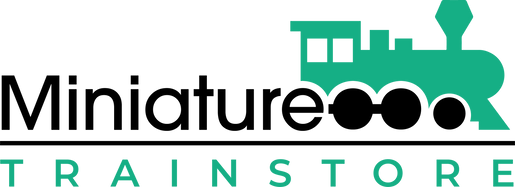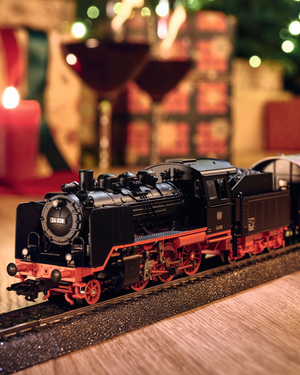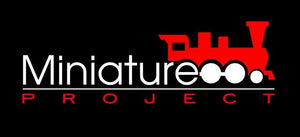You can certainly see from the photos that our T18 looks great and, depending on the era, has different lanterns, feed pumps, cable routing, cab roofs and coal bins. What you may not immediately recognize from the photos is the cylinder steam, a new feature for ESU steam locomotives. This was created in the prototype when blowing out condensate. Since cylinder steam does not escape in every driving situation, not even in the original, our H0 model behaves accordingly. Of course, you can set this function as desired, as you are used to from ESU. Incidentally, the smoke visible in the photo did not have to be improved with an image editing program. Although some machines at the DB were equipped with a push-pull train control, most locomotives always drove in front of the train, which made it necessary to move the locomotive at the destination station. That is why we supply our models with digitally remote-controlled couplings. These work with the ESU universal coupler 41000, but also with the Märklin® close coupler and with commercially available bracket couplers. As you know from other ESU traction vehicles, many prototypical light functions can be switched on. This means that you can usually maneuver with just one headlight at each end. In the dark, the chassis and cab lighting support the H0 crew in their work. The powerful bell-shaped armature motor with flywheel works deep in the metal frame and, tamed by the LokSound 5 decoder, ensures smooth driving characteristics and prototypical traction. By removing or attaching the slide and pressing a switch on the floor of the locomotive, you can switch between two-wire and center-wire operation.
| Model |
Chassis, frame, water tanks and smoke box are made of metal |
|
Individually mounted detail parts made of brass or plastic |
|
Universal electronics for use on both DC and AC tracks: the locomotive can be used on three- and two-rail tracks by removing the AC pickup and replacing a toggle switch |
|
Coreless motor with flywheel |
|
Two anti-slip tires |
|
Powered by ESU LokSound 5 Decoder for DCC, Motorola®, M4 and Selectrix® operation |
|
Automatic RailComPlus® detection with suitable control units. |
|
Automatically registers on Märklin® central units using mfx® |
|
“PowerPack” storage capacitor for uninterrupted power supply |
|
Load-dependent, fan-driven and shaft-driven smoke unit with double outlet and temperature control. Smoke exhaust via the chimney and also via the cylinders (individually controlled).
|
|
Direction indicators white/red, cabin lighting, suitable lighting in shunting mode, illuminated firebox with warm white LEDs |
|
Double sugar cube speakers with large sound box for the best possible sound |
|
Automatically controlled couplings in standardized shaft according to NEM 362 |
|
Working track lighting |
|
spring buffers |
|
Metal wheels and cast side bars |
|
Minimum radius 360 mm |
|
Length over buffers 170.1 mm
|
About the locomotive:
The T18, developed by the Stettiner Lokfabrik Vulcan, was based on a request from various Prussian railway directorates for a tank locomotive that could reach at least 90 km/h both forwards and backwards. The T18, built between 1912 and 1927 in 462 units by various manufacturers, is considered the most successful tank locomotive for passenger trains on the Länderbahn and was used by the Deutsche Reichsbahn DR until 1972 and even by the Deutsche Bundesbahn DB until 1974. The symmetrical chassis allowed for equally good driving characteristics in both directions, and the tank locomotive, which was largely taken from the G8, had already proven its suitability at the start of production of the T18. With an output of 1,140 hp and a top speed of 90 km/h, increased to 100 km/h from the eleventh unit delivered, the locomotives were also used to pull light express trains. Shortly after the Second World War, the Deutsche Bundesbahn (German Railways) resumed tests with push-pull trains in order to shorten the turning times of local trains. For this purpose, a number of the 424 remaining locomotives of the DB were equipped with an indirect push-pull train control from the company Hagenuk. When the train was being pushed, the driver sat in the control cab and passed on the driving commands via the control device to the fireman on the locomotive, who operated the controller. As soon as the driver applied the brake, the controller was automatically closed by compressed air from the control cab. Later, the push-pull train control was removed from most of the 78.0-5s and the locomotives were again used for light passenger and freight train traffic. In the early 1970s, the DB brought its Prussians together in Baden-Württemberg. After the Second World War, the Deutsche Reichsbahn of the GDR had 53 locomotives of the class 78. To improve the driver's view, some machines from the Stralsund depot were fitted with small smoke deflectors.

















